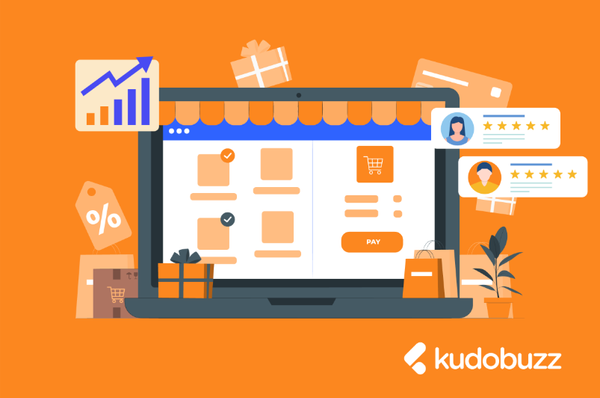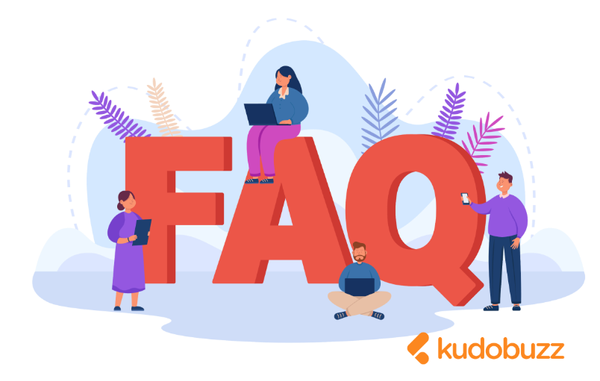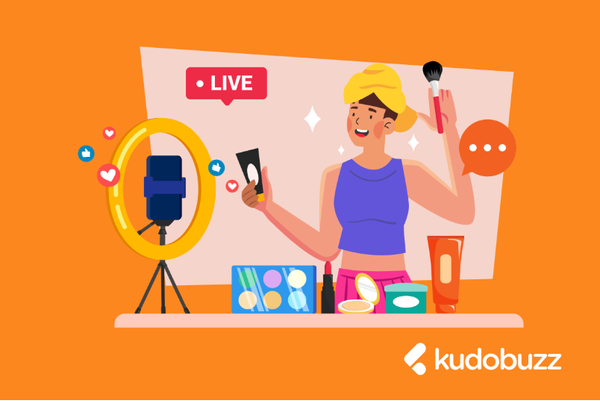Influencer marketing involves getting people with huge social media influence to create content about your product with the aim of swaying consumer affinity towards your brand. Due to their large social following, influencers can shape conversations and engagement around a particular topic, discussion, or niche area. Hence, when they make a post about a product, their fan community embraces it.
For example, if a fashion photographer with 10,000 followers on twitter tweets about your latest Club T-Shirt you’re marketing, the likely result is that a portion of his/her 10,000 followers will be exposed to your product, and chances are, some of them will buy your product.
Those who will be converted into customers include those who knew about the product but were skeptical about its quality, as well as an entirely new audience who will be seeing your product for the first time.
According to a study by Linqia, 86% of marketers used influencer marketing in 2017.
There are different types of influencers ranging from successful entrepreneurs, actors/actresses, models, social media stars, bloggers, vloggers, reality TV stars, musicians, successful sports personalities, etc.
However, these types of influencers can be broadly categorized into two groups: Macro-influencer and Micro-influencer.
Macro-Influencer
Macro-influencers are power users and widely recognized trendsetters with a dedicated audience that has grown organically over time. They control a massive wave of audience reach ranging from 500,000 up to millions of followers.
Because of their influence, they have high visibility and enjoy a lot of shareability and have a lower cost per impression (CPMs).
For example, Zach King, a YouTube personality and filmmaker, who has featured in high profile campaigns for brands like Coca-Cola, Disney, Pixar, and Crayola, posted a short video on YouTube and within days it gained millions of views.
(Source: YouTube)
Another good example is model cum businesswoman, Kylie Kristen Jenner who currently has over 28 million followers on Twitter.
Micro-Influencer
As a small business holder, you may not have the budget to hire the services of the likes of Zach King, Kylie Jenner, Justin Bieber, Beyonce, Trevor Noah, et al because of perhaps their price tag.
But relax! Influencers may not necessarily be high profile names. They could just be ordinary people with great influence such as a popular fashion photographer on Instagram, a savvy and credible content marketer, a well-read cybersecurity blogger who tweets, or a respected marketing executive on LinkedIn.
These sets of influencers are categorized as micro-influencers. They have modest numbers of followers of something between 1,000 and 100,000 followers.
These set of people may not ask beyond your products as compensation for their services to you. Even those who you might request for money, it will be within reasonable limits you can negotiate.
You might regard micro-influencers as low profile compared to the big names, but according to a study, influencers with fewer followers have better engagement. Per the study, influencers with 1,000 to 5,000 followers had 8.8% engagement while those with 10,000 followers or more had just 3.6% engagement.
Another study also showed that “82 % of consumers are highly likely to follow a recommendation made by a micro-influencer because they’re perceived as more credible and knowledgeable”.
This is because while influencers with “big names” and tons of followers are seen as celebrities, micro-influencers are at peer levels with consumers, hence, they are seen by consumers as one of them. As a result, their followers believe that they won’t recommend fake or substandard products to their followers. In addition, because they don’t have as many followers as the macro-influencer, they are able to interact or engage with their followers.
How To Pick An Ideal Influencer
Now you know influencer marketing is a great way to expose your products to millions of potential consumers on YouTube, Facebook, Twitter, Instagram, LinkedIn, etc.
But how do you get these influencers to kick start your campaign? Here is a list of things to consider to guide you to pick the right influencer for your campaign:
Relevance To Your Niche
What are you selling? What industry do you find yourself in? Influencer marketing is about getting influencers who have the right audience for your product. This way when he/she makes a post about your brand, it will look more relatable and trustworthy in the eyes of his/her followers.
For example, if an influencer has a lot of teenage followers, it won’t make a lot of impact if he/she tweets or posts about Rocking Garden Seat. This is because many young people do not need to sit when gardening, thus, would not be interested in buying a Rocking Garden Seat.
Apart from choosing an influencer whose audience is likely to like your products, your influencer should also be interested in your kind of product.
According to research conducted by CrowdTap, “44% of social media influencers indicated that the number one motivator for working with a brand is if the opportunity is relevant to their audience.''
If you sell fashion items, there are a pool of influencers who will love to flaunt your products and share with their followers. This will ensure that your influencer also resonates with your company’s vision or brand personality.
It is even better if your influencer is already your fan! It could happen that an influencer already mentions your brand in some of his/her posts. You can track your brand mentions by using tools like Google Alert and Talkwalker Alerts.
Number of Loyal Followers
It is a constant factor that your influencer of choice should have large loyal followers. But it’s not just about numbers. You should also peruse the average number of engagements such as comments, retweets, views or reactions they receive on their social media platforms. This will help you gauge whether he/she can give you the impact you want to see with your campaign.
First, sort out a number of influencers you wish to work with. After that, you can now do a comparative analysis of the ones who will give your product the maximum exposure.
Your Influencer Should Be Trustworthy
Trust plays a very critical role when it comes to marketing. Are his/her followers genuine or fake followers?
You have probably all seen these types of ads: “As low as $4 for 500 Followers | 100% Real Instagram Followers” or “Buy Instagram Followers, etc.
Yes, there are many wannabe influencers who buy followers, likes, comments, etc. This means any dollar spent on such influencers may not be worthwhile.
There are, however, tools that can help you audit the followers of your influencers to see if they’re genuine people. Tools like HypeAuditor, IG Audit, FakeCheck.co, etc are great tools that can help you spot fake influencers on Instagram.
Apart from using tools to screen and prone your influencers, make sure to get your influencers through the right way.
There are also marketplaces where companies can have unrestricted access to a wide array of influencers including their information about influencer performance in previous campaigns. Platforms such as NeoReach, Upfluence, AspireIQ, etc makes it easy for merchants to connect with trending influencers.
With a tool like BuzzSumo, you can search by influencers with relevant keywords related to your niche. You can easily also prone down influencers based on the number of followers, average retweet, reply ratio as well as the city or country they live.
You can also reach them via their personal blog. Influencers with very strong and credible presence have their personal blogs where they publish stuff about their activities. According to a study, 86% of influencers also operate at least one blog.
So easily target them via their personal blogs. Either send them a message or search for their email addresses at the “Contact" or “About Us” pages. Chances are you’ll get his or her contact details there.
What To Do After Reaching Out To Influencers
After getting a hold on your influencer, it’s time for action. But what do you need to do? The underlisted point will help you out:
Prepare A Partnership Contract
Send a contract to the Influencer which clearly spells out the responsibilities and expectations of the influencer. It should capture the timeline of the partnership, the agreed compensation, weekly or monthly tasks, a termination clause, etc. Essentially, every verbal communication about the expectations of both parties must be documented. This will not only serve as a guide to your partnership but also a shred of relevant evidence for the court in case any party decides to sue. Remember to be transparent to the influencer to build a lasting relationship.
All in all, the rise of social media has made influencer marketing an indisputable viable marketing strategy. You should, therefore, stay up-to-date with all the ins and outs of influencer marketing to ensure to get the best return. The points discussed above presents a good guide to keep you a very firm start. In my next blog post, I will show you how to leverage Social Media influencers to increase sales.
Help us publish content solutions that serve value for your eCommerce business by leaving your views in the comment section below.
Call To Action
If you want to read more content on how to succeed as an e-commerce owner, sign up for our weekly newsletter below to receive resources and tips on how to increase sales and revenue straight into your inbox.








